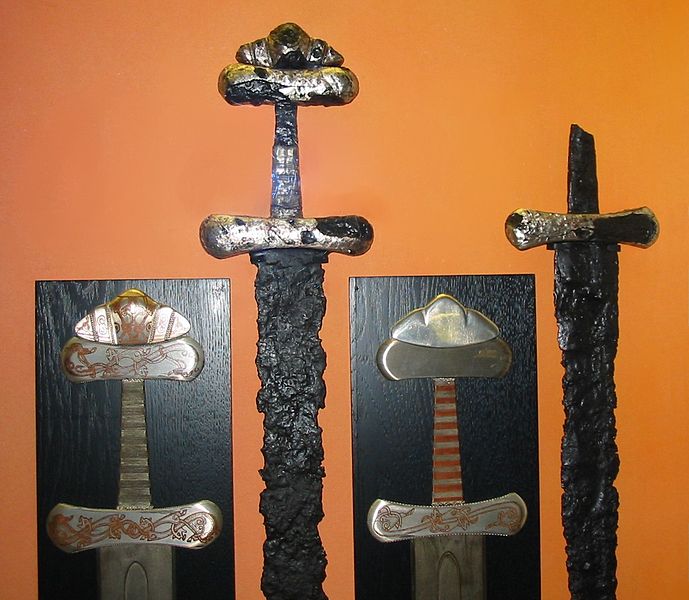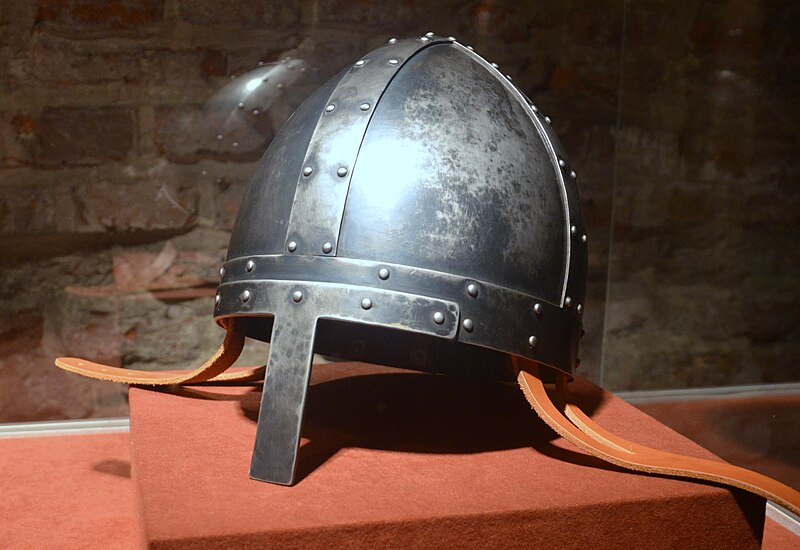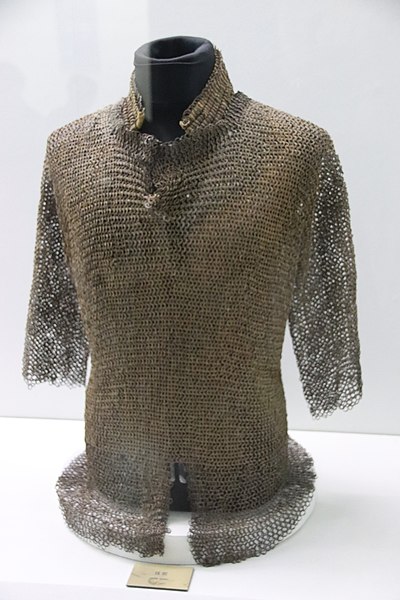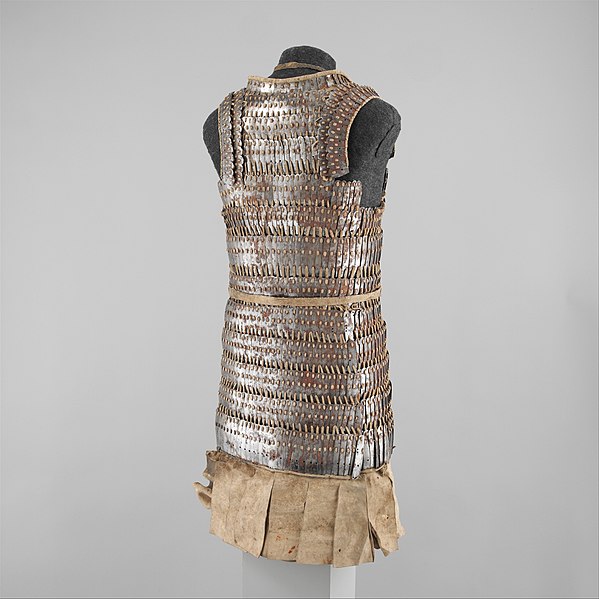Vikings are popularly associated not only with ships but also with weapons. Their customs require all free Vikings to carry weapons at all times. It does make sense because weapons are crucial for self-defense and on their plundering raids. But for ordinary Vikings, some of these weapons are used as tools to help them with their everyday tasks.
Archaeologists found several weapons and protective gears used during the Viking period. It is very likely to happen since Vikings used to bury the weapons of their deceased with them. The armors and weapons from the Viking age provide an idea of what Viking warfare looked like. Learn what battle equipment and weapons are used by the Vikings below.
Spear
The most typical weapon used by the Vikings was the spear. The reason is that it requires less iron to manufacture. It makes it cheaper compared to other weapons used during the time.
The spear is also versatile and effective to use. The Vikings either use it to stab their enemies at a distance or throw it to pierce them. The spears in the Viking age came in many forms. However, they typically range from 3 to 10 ft long and include various spearhead shapes.
Vikings believe that throwing a spear first to their enemy during conflicts means offering their enemies to Odin, ensuring their victory. They also make this gesture to follow what Odin did during the war between Vanir and Aesir. Odin strikes fear into the opposing army by throwing a spear over the heads of the Vanir gods. Vanir and Aesir are described in Norse mythology as two power groups of gods.
Ax
Ax is another hand weapon used by the Vikings. With a single blow, an ax could crack helmets and armors in two and cut an armored limb. Several Viking axes are specially designed with longer shafts and larger heads. One of those is the Daneaxe with the same length as a man, a weapon used with both hands.
While most Viking axes are made of iron, some are adorned with silver. Moreover, some axes in the latter part of the Viking age have crescent-shaped ax head edges. These are called broad axes, which measure around 45 cm. The only disadvantage of this type of ax is its slow recovery time after striking.
Axes are the most commonly found artifact by Archaeologists from the Viking age. Perhaps it is not only used for battles or wars but a tool Vikings used in their daily lives.
Swords

In the Viking age, swords signified high status, and owning one was a high honor. Swords were the most prestige weapon in the Viking age. If one wields a richly decorated sword, it indicates that the owner is wealthy.
Among the most mysterious swords from the Viking age found by archaeologists is the Ulfberht sword. There are 170 of these medieval swords discovered in Northern Europe. What’s more interesting is that these swords have an inscription +VLFBERH+T or +VLFBERHT+, which is probably a Frankish name representing the possible origin of the blades.
Archaeologists are also astounded that the swords are forged like they have been made using technologies that are only present 800 years after the Viking era. It is fascinating because the swords date from around 800 AD to 1000AD. Ulfberht swords are probably forged with the ore heated around 3000 degrees Fahrenheit based on the iron they are made of.
Shields

If Vikings used weapons, they also had shields to protect themselves. In the Viking period, men in a battle used huge, round shields made of wood, which they gripped in the center behind an iron boss.
Archaeologists found a few shields from the Viking age. There are 32 shields from the Gokstad ship that dates back to the 10th century. All of them are made from one layer of wooden planks joined together. These shields do not have iron bands and are painted yellow and black.
Usually, Viking shields have a diameter of 32 to 36 inches. However, the Gokstad shields are larger and feature 37 inches in diameter. Some surviving Viking shields are also smaller, having around 28 inches in diameter. Perhaps, shields are made according to the fighting style and body size of their owner.
Knifr and Seax Knife

Vikings used two distinct types of knives. The most common type is the plain, single-edge knife, knifr. This type has normal construction, and several knifr are found in graves. It is likely because the knifr is the only weapon allowed even for Viking slaves.
A smaller knifr is used as a utility tool. Meanwhile, longer ones were used for either combat or hunting. Sometimes the blades of this type of Viking knife have ornamental inlays. Many knifr knives are found in burial sites of women, men, and children Scandinavians, signifying the importance of this knife.
Seax is another Viking knife dating back to the 4th century. Vikings are associated with the so-called broken-back style seax, typically heavier than the regular knife. Rich Vikings might have larger seax, which is simpler to use than a regular sword.
Spangenhelm Helmets

Another protective gear used by the Vikings was helmets. But unlike what Viking movies usually portray, helmets during the Viking age don’t have horns. Instead, they are commonly made of a simple bowl with a nose guard made of iron.
The helmet bowl during the Viking period was made of several pieces of iron joined together. This style of helmet is called spangenhelm. Manufacturing a helmet this way requires less work. Besides, iron in the Viking age was also limited, making it harder for smiths to make a helmet bowl made of a single piece of iron.
Another style of Viking helmet has been found in Gjermundbu, Norway. It looks frightening at a glance, which can strike fear in the opponent. It also covers most of the head and face, creating anonymity.
Chainmail Armor

Like swords signify high status, chainmail armor is also reserved for wealthy Vikings. Chainmail armor is a protective armor made of thousands of interlocking iron rings. During the Viking period, chainmail armors are composed of 4-in-1 patterns wherein every ring goes across its four adjacent rings. A few samples of chainmail armors are entirely made of riveted rings.
Usually, the chainmail armor has a T-like shape, and its sleeves are short. Its length also reaches the thigh since riding a horse could be difficult if it’s longer than that. Chainmail armors weigh around 12 kg of iron, considered a treasure in the Viking age. For this reason, only a few Vikings could wear chainmail armor.
Wealthy Vikings used smaller pieces of mail to protect more vulnerable body parts. It is also said that some Viking helmets have mail curtains around the neck to avoid cuts.
Bows and Arrows

Aside from axes and spears, Vikings also used other weapons like archery. Using bows and arrows is undoubtedly not the forte of Vikings, but they are fast learners. They can quickly adapt to their enemies’ tactics and weapons to win the war or battle.
Vikings used bows and arrows for both wars and hunting. Bows in the Viking period are made of elm, ash, or yew trees. A 10th-century bow has a draw force that probably reaches 90 pounds, allowing an effective range of around 250 meters. A Viking bow and arrow was found at Viking Hedeby, which had a draw force of 100 pounds.
Some illustrations from the time show that bows are not being pulled back under the chin or to the corner of the mouth. Instead, they are being pulled back to the chest. Usually, arrowheads are made of iron and manufactured in different sizes and shapes, depending on their origin.
Lamellar Armor

There is archaeological evidence that Vikings also used lamellar armor aside from chainmail. One was, in fact, found in Birka, Sweden. Lamellar armor is another metal armor that is isolated from Norse warriors. It is a protective gear that was rarely used in the Baltic region until the 14th century.
Most lamellar armor used by the Vikings is made of leather and metal. The one made of leather can only protect the body against arrows and bolts. But, it is more lightweight, and leather is widely available, making it easy to produce. On the other hand, lamellar metal armor protects the Vikings against thrusting, slashing, and piercing attacks.
To make one lamellar armor, huge numbers of small platelets made of metal or leather are sewn together. Usually, hundreds to thousands of small platelets are used to provide Vikings a strong armor to protect most vital parts of their bodies.